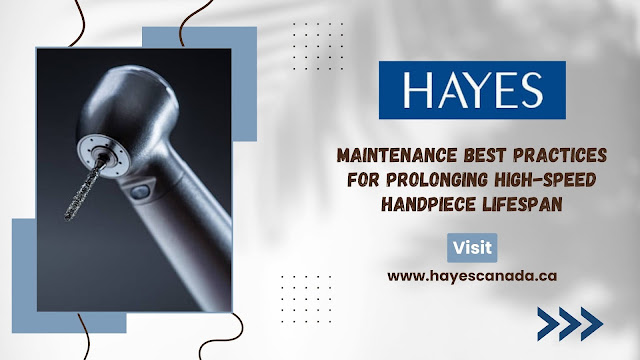Maintenance Best Practices for Prolonging High-Speed Handpiece Lifespan
High-speed handpieces are critical tools used in dental and medical procedures, making them an essential investment for dental professionals. Proper maintenance is crucial to ensure their longevity, functionality, and performance. In this article, we will explore maintenance best practices that will help prolong the lifespan of high speed handpieces, ultimately reducing the need for frequent repairs and replacements.
1. Regular Cleaning and Lubrication
Cleaning
After each use, thoroughly clean the dental handpiece with a recommended cleaning solution to remove debris and organic materials. Use a soft brush to clean the external surfaces and remove any buildup of contaminants. Pay special attention to the chuck area and the air and water channels.
Lubrication
Regularly lubricate the handpiece using a high-quality handpiece lubricant. Follow the manufacturer's guidelines for lubrication intervals and use only the recommended lubricant to prevent damage to internal components. Proper lubrication reduces friction and wear, ensuring smooth operation and prolonging the handpiece's life.
2. Sterilization and Infection Control
Sterilization
Always follow strict sterilization protocols recommended by the handpiece manufacturer. Utilize autoclaves or other approved sterilization methods to prevent cross-contamination and maintain patient safety. Failure to follow proper sterilization procedures can lead to premature deterioration of handpiece components and increased risk of infection transmission.
Handpiece Maintenance After Sterilization
Allow the handpiece to cool down after sterilization before use. Purge excess water and debris from the handpiece before connecting it to the delivery unit. This precaution prevents water and contaminants from entering the handpiece turbine and affecting its performance.
3. Routine Inspection and Maintenance
Regular Inspections
Conduct routine inspections of the handpiece to identify any signs of wear, damage, or malfunction. Check the chuck mechanism, bearings, air and water lines, and fiber optics (if applicable). Address any issues promptly to prevent further damage and ensure the handpiece is always in optimal condition.
Turbine Replacement
Turbines are crucial components of high-speed handpieces and are subject to wear over time. Replace the turbine as recommended by the manufacturer or when you notice a decrease in cutting efficiency. Regular turbine replacement prevents performance issues and extends the handpiece's life.
4. Proper Handling and Storage
Handling
Train all staff members on proper handpiece handling techniques. Avoid dropping the handpiece or subjecting it to excessive force, as this can cause internal damage. Use caution when changing burs to avoid chipping or damaging the turbine.
Storage
Store the handpiece in a clean and dry environment. Utilize handpiece hangers or sterilization cassettes to keep the handpiece organized and protected from contaminants. Avoid storing the handpiece with burs attached to prevent unnecessary pressure on the turbine.
5. Professional Maintenance and Repairs
Regular Servicing
Schedule regular maintenance and servicing with authorized handpiece repair technicians or the manufacturer's service center. Professional technicians can detect and address potential issues before they escalate, keeping the handpiece in optimal condition.
Prompt Repairs
If the handpiece exhibits any performance issues or unusual noises, have it inspected and repaired promptly by a professional. Delaying repairs can worsen the problem and lead to more extensive damage.
Conclusion
Proper maintenance is essential for extending the lifespan of high-speed handpieces. Regular cleaning, lubrication, sterilization, routine inspections, proper handling, and professional servicing all contribute to optimal handpiece performance and longevity. By following these maintenance best practices, dental professionals can ensure that their high-speed handpieces continue to provide reliable and efficient service, ultimately saving costs on frequent replacements and repairs.




Comments
Post a Comment